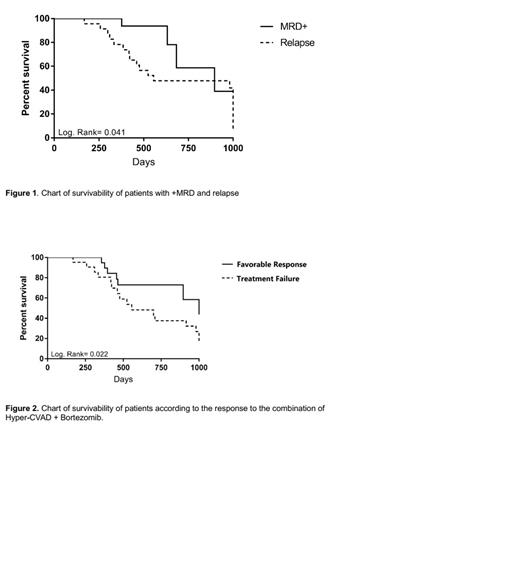Background: Despite the advances in treating adult Acute Lymphoblastic Leukemia (ALL), relapses are among the most significant challenges to improving the prognosis. One of the tools that can predict bone marrow relapse, according to its positivity, is Measurable Residual Disease (MRD). Unfortunately, due to the high cost, access to innovative therapies is limited, so chemotherapy remains the most common treatment option. The combination of Bortezomib with Hyper-CVAD has already shown efficacy in patients with Multiple Myeloma. However, in patients with ALL, it is not yet proven. Material and Methods: A prospective cohort was carried out in patients with ALL who presented an +MRD or relapse and received treatment based on the combination of Bortezomib and Hyper-CVAD in two reference centers in Mexico City. Results: 20 cases with positive MRD were analyzed; 60% (n=12) became negative after the combination, 30% (n=6) persisted with a positive result, and 10% (n=2) passed away. Of the 43 individuals with bone marrow relapse, 43.5% (n=10) achieved a second complete remission (2CR), 34.8% (n=6) were refractory, and 21.7% (n=5) passed away. To integrate a second complete remission, 20% (n=2) achieved it in < 4 cycles, while 50% (n=5) required four cycles of treatment (2 cycles A and two cycles B), and 30% (n=3) required six cycles. Conclusion: The combination of Bortezomib with the increased Hyper-CVAD scheme showed better results in making MRD negative, suggesting that this combination can be incorporated into first-line strategies.
Keywords: Bortezomib; Chemotherapy; Acute Lymphoblastic Leukemia; Relapse; Measurable Residual Disease.
Disclosures
No relevant conflicts of interest to declare.


This feature is available to Subscribers Only
Sign In or Create an Account Close Modal